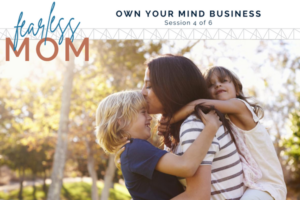Welcome to session 5 of OWN YOUR MIND BUSINESS. In this session, we will discuss how to GUARD THE GAP, and how to proactively build and work to protect that space between thoughts & feelings and actions & behaviors, leading to emotional resilience and emotional well-being.
When Emily and Joe were about 6 and 4, Mac took them to tour a custom guitar place in Austin. They weren’t there very long when Emily pointed at some pictures on the wall. She said, “Daddy, is this Lyle Lovett? And is this Robert Earl Keen? And is this Jerry Jeff Walker?” The guys from the shop were noticeably surprised and impressed. Mac was beaming with pride. He couldn’t have been prouder that his 6-year-old daughter recognized the three Texas singer-songwriter legends. As he told me the story when they got home, he declared, “My work here is done. She loves God and Texas music.” He was winning at this parenting thing. He didn’t believe our parenting work was ACTUALLY done, but he was pretty thrilled at how he’d passed along his love for these artists.
Emily’s “musician awareness” at such a young age was a direct result of her exposure to these musicians, a result of Mac’s listening to and talking about those musicians. She didn’t even know that she was learning. She was just hanging out with her dad while he was listening to their music. Mac recognized music’s value, articulated music’s value, and modeled music’s value in our home. Her love for music was an overflow of his love for music.
Our children’s emotional, social, and spiritual awareness is a result of the culture of and core values in our homes. The best way to teach and equip our children to develop self-control and emotional well-being is to understand it and discuss it in our homes, as part of our everyday lives.
SELF-AWARENESS is key to this emotional growth and development. To know how and where to implement self-control, one must be self-aware of impulses, desires, and reflexes. I must know my emotional reactions in various situations so that I can work on my intentional responses.
SELF-AWARENESS is built in a home that emphasizes
- Communication and understanding
- Love and trust
- Direction and correction
- Others-awareness and God-awareness
The best way to teach our kids SELF-AWARENESS is to first understand it. Then we recognize its value, articulate its value, and model its value. They, in turn, learn its value. Same with SELF-CONTROL. First, you understand its value. Then, you recognize, articulate, and model it.
Some of these sentences and verses you’ve heard in these sessions are valuable to memorize and say regularly in your home. Kids pick up on these things, just as Emily picked up on who Jerry Jeff Walker was:
- The goal is not POSITIVE THINKING. The goal is ACCURATE THINKING.
- Thoughts are POWERFUL, but not always ACCURATE.
- Any feeling is OKAY TO FEEL, but HOW YOU EXPRESS IT matters.
- Feelings are REAL, but not always RELIABLE.
Don’t worry about anything; instead, pray about everything. Tell God what you need, and thank him for all he has done. Then you will experience God’s peace, which exceeds anything we can understand. His peace will guard your hearts and minds as you live in Christ Jesus. And now, dear brothers and sisters, one final thing. Fix your thoughts on what is true, and honorable, and right, and pure, and lovely, and admirable. Think about things that are excellent and worthy of praise. Philippians 4:6-8
Don’t copy the behavior and customs of this world, but let God transform you into a new person by changing the way you think. Then you will learn to know God’s will for you, which is good and pleasing and perfect. Romans 12:2
The approach we’re taking to teach and empower our children with self-awareness and self-control is CBP. COGNITIVE BEHAVIORAL PARENTING: proactive strategies that help children understand their thoughts and feelings and how those thoughts and feelings affect their actions.
CBP is PROACTIVE STRATEGIES. You’ve heard me say before that PROACTIVE IS MORE THAN A ZIT CREAM. IT’S A WAY OF LIFE. What do I mean by that?
PROACTIVE: acting in anticipation of future problems, needs, or changes.
We KNOW our children’s behaviors and actions are directly affected by their thoughts and feelings. We want to arm them with tools to manage all the thoughts and feelings that come with living life in this world. We want to equip them to catch those thoughts and feelings and CHOOSE the appropriate response, action, and behavior. We want to help them develop SELF-AWARENESS and SELF-CONTROL to identify and process and express those thoughts and feelings in a healthy, productive way. We want to help them SPOT that space and OWN that space between thoughts & feelings and actions & behaviors. We want to help them DEVELOP that space. We want to help them protect and guard that space. We want to help them GUARD THE GAP.
I’m going to list some of the strategies that help develop and guard the gap.
Delayed gratification
Mindful moments
Breathing exercises
Physical activity
Journaling
Thoughts/feelings check-ins
- We want to normalize thoughts and feelings. Dinner table conversations:
- Find 2 feelings you’ve felt this week and tell us about what was happening.
- What’s your favorite feeling to feel? What makes you feel that way?
- What feeling do you try to avoid or is most uncomfortable to you? When do you feel that way?
- Did you notice anyone in your class feeling ___ today? Why do you think they felt that way?
- What can you do when your friend is feeling ___? What do you like for your friends to do when you’re feeling ___?
- Guess the feeling – make facial expressions – empathy
Circle of Control
It helps give perspective and helps us recognize when we’re spinning our wheels and wasting thought, time, and energy on things we cannot control.
- Make peace with what is not in your control. Recognize and address your feelings about what’s outside the circle.
- Your thought, time, and energy should be spent in the circle.
Let’s discuss THE POWER OF INSTEAD – refuting inaccurate and unhelpful thoughts with accurate and helpful truths.
TRUTHS
- I expect hard things to happen.
- I get stronger and smarter when I do hard things.
- Life’s not always fair, but God is always good
- I am not perfect.
- Jesus is the only perfect person who ever lived.
- Failure isn’t fatal, and I can learn from my mistakes.
- I always have a choice.
- I can’t always control others or situations, but I can always control how I approach and respond to them.
- I control what I can and make peace with what I can’t.
- God is always in control.
- God always hears my prayers. He is with me and for me.
- Even if something bad happens, God will take care of me.
In addition to these truths, helping our children memorize scripture empowers them to refute inaccurate thoughts.
- “I am all alone.”
-
- Joshua 1:9, Isaiah 41:10
- “I am in danger/I will get sick.”
-
- Jeremiah 29:11, Romans 8:28
- “I can’t do it (whatever IT is).”
-
- Philippians 4:13, Mark 10:27
And there are many more! You can search for scripture that refutes inaccurate thoughts. Simply search BIBLE VERSES ABOUT ________. I recommend the New International Readers Version, the New Living Translation, the Message, or the International Children’s Bible versions for language that children understand.
Remember that SELF-AWARENESS is strengthened by OTHERS-AWARENESS and GOD-AWARENESS. The more you understand God and His love for you, the more you understand your place and calling in this world, as well as your identity and your purpose.
So we empower our kids with TRAINING and TRUTHS and also by helping them recognize and prepare for…
TRIGGERS
- Expect worry, fear, frustration, etc.
- We know that worry, fear, and frustration are part of life. We normalize them and expect them, so we’re not ashamed of or taken by surprise. Oh, look at that. I’m afraid. I can FEEL afraid and act BRAVE.
- Notice patterns.
- Help your child BEFORE situations/circumstances that have previously triggered worry, fear, anger, and sadness. Mention the pattern and help him come up with what he can do that is helpful and productive.
- Arm yourself for battle.
- When you have a plan, you’re less likely to panic. Instead of an EMOTIONAL REACTION, you want an INTENTIONAL RESPONSE. Plan the intentional response BEFORE the battle, when your prefrontal cortex is active! This will help when the amygdala kicks in – oh, I know what I need to do!
- Address, don’t avoid.
- Use the power of INSTEAD when teaching appropriate expression of feelings. Give your child opportunities to practice these strategies. Don’t avoid all triggers all the time. Be wise and intentional to expose your child to opportunities to practice self-control.
Practice makes PERFECT? NO.
Practice makes PROGRESS!!!
Guarding the gap takes time and effort. It takes intentionality. But it takes understanding and appreciating GUARDING THE GAP ourselves. Understanding its value. Articulating its value. Modeling its value.
You be your best you today. Your children will benefit simply from your overflow.




